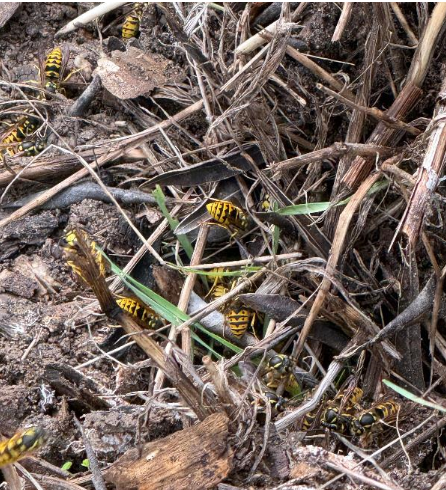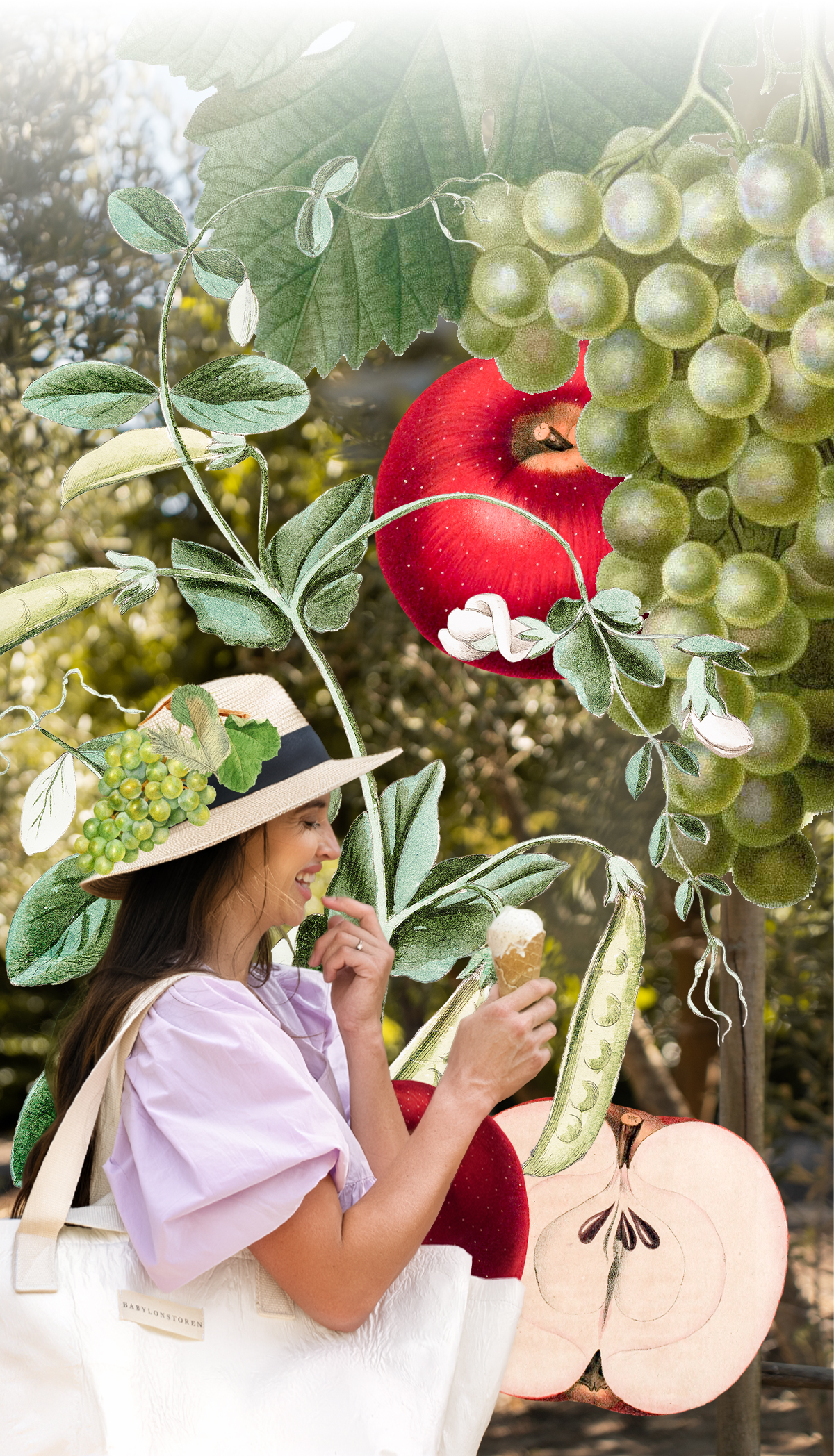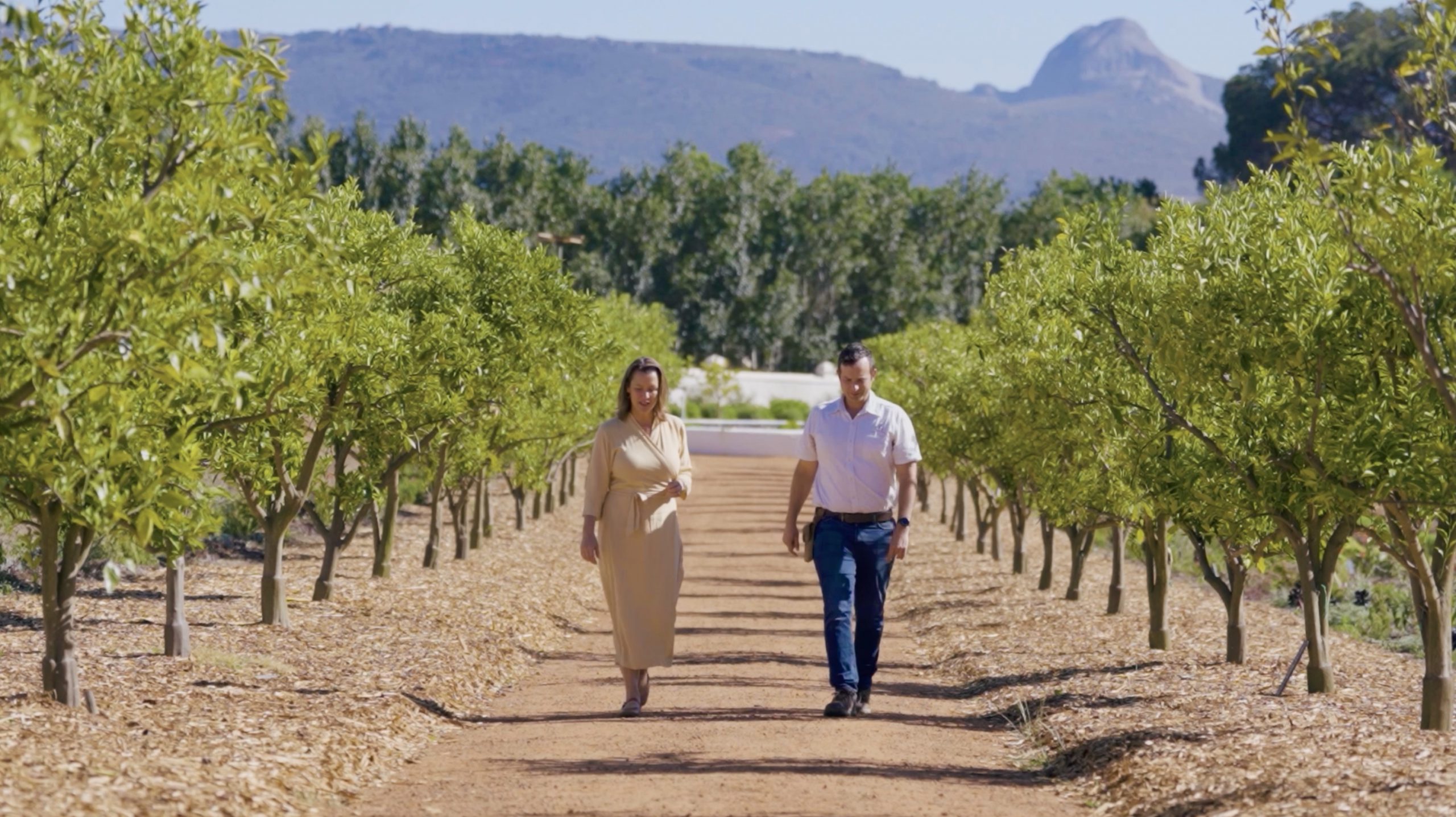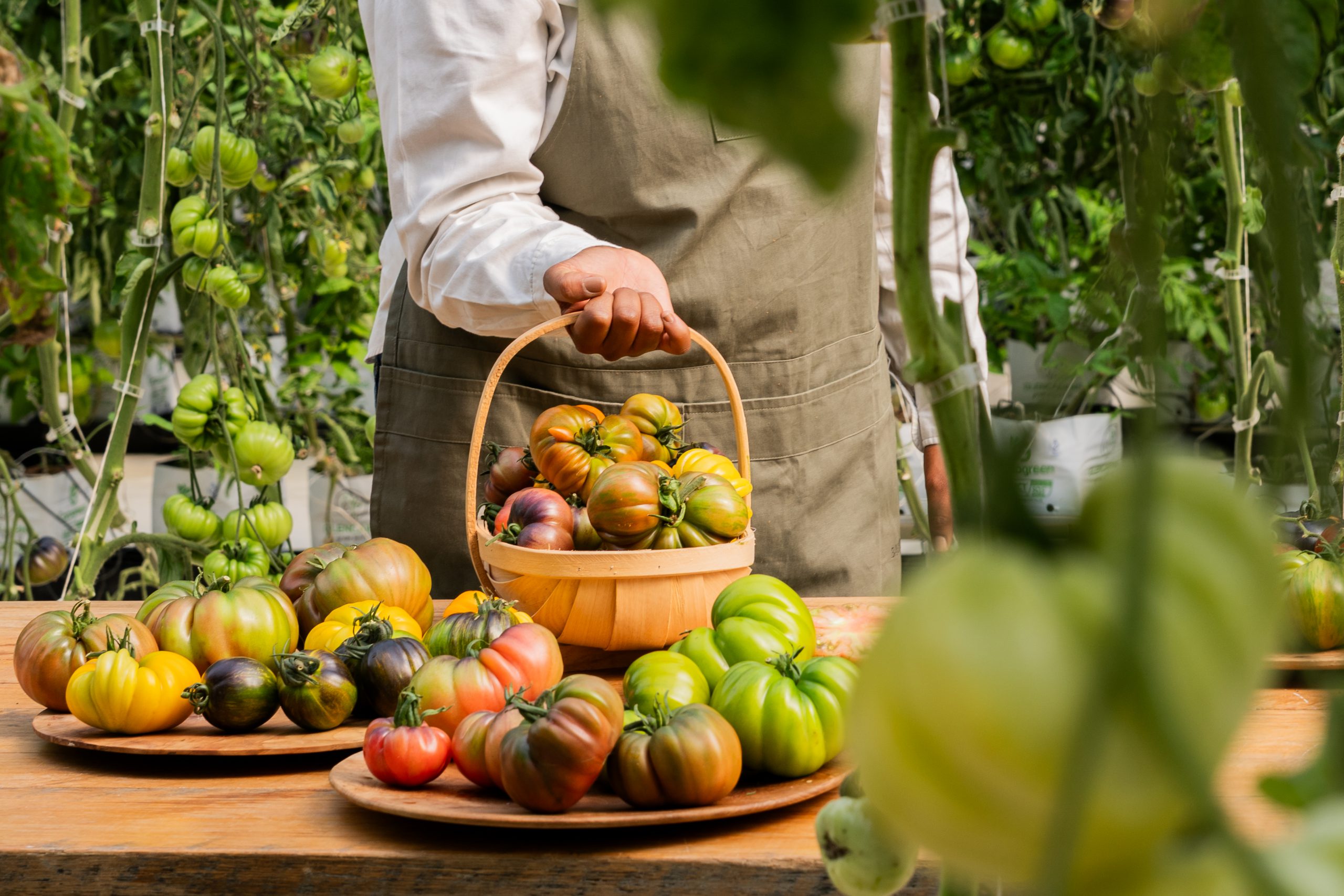Buzzing News Vol. 8
July 21st, 2025A week in the life of Babylonstoren’s VIP garden workers, by our resident beekeeper and entomologist, Arné Stander.

Overview
Winter has properly set in with steady cold fronts and several days of rain. Behind the scenes, I’ve been working on the observation hives for the new Byzantium, which we hope to open to the public in September.
Prowell built me a temporary hive, scaled exactly to match the Byzantium’s final display hive. The goal was to transfer an existing swarm into this mock hive so they could start building wax comb on fresh frames.
First, I prepared the frames. Each has a groove for a wax starter strip. Using a portable gas stove, I melted beeswax to act as glue. I placed propolis in the groove ends to stop the wax from running out, then sealed the strips in with a tablespoon of melted wax.
To make the new frames more attractive to the bees, I smeared propolis on the top bars. I also added propolis to the landing platform and entrance hole, then built a small ramp inside leading to the floor of the hive.
Once everything was set up, I transferred a small swarm from Rietvlei – just four frames to begin with – allowing space for comb-building on the new ones.
I placed the two brood frames at the centre, flanked by two starter strip frames, then a full comb frame on either side. This encourages the bees to bridge the gaps by building new comb on the starter strips.


Being winter, colony size is smaller and brood minimal – limited to the two central frames – so building will be slow. But the bees took to the new entrance immediately.


The Log Hive Project
I’ve also been working on a log hive using a beautiful oak tree trunk gifted by Klaas van der Wal. Hendrik helped hollow it out with a chainsaw and cut an entrance hole. I finished it by lining the opening with warm propolis for a more natural look.
Louis from Maintenance fitted a piece of plexiglass to create a viewing window, which I sealed with propolis. Inside, I smoothed the hollow with melted wax to prevent sharp edges. Covered in moss, the hive blends perfectly into the farm’s oak groves – a fitting home for wild swarms.


Feeding the Garden Hive
With limited winter foraging, our garden’s observation hive began showing signs of hunger. The front honeycomb had dried out. I’d harvested extra frames earlier for just this purpose and placed three inside the hive for supplementary feeding.
Within an hour, the bees were feasting. I’ll swap out the frames again in two weeks.


Late Wasps
We recently removed a wasp nest along the Tigris stream, between the Waterblommetjie pond and the new rock garden. A surprising number of queens were still inside – unusually late for the season. But with the cold now setting in, these nests won’t survive and queens will soon go into hibernation.

BUZZ WORDS
Super - Any hive body, usually a smaller box, used for the storage of honey which the beekeeper intends to harvest. Normally it is placed above the brood chamber(s). Supers are typically medium or shallow-sized boxes.
Apiary - Colonies, hives, and other equipment assembled in one location for beekeeping operations.
Beehive - An artificial cavity for a bee colony to live in, usually a box or boxes with movable frames.
Brood - Immature bees that are still inside their cells. Brood can be in the form of eggs, larvae, or pupae of different ages.
Capped honey – When bees cover their honey with wax, much like putting a lid on it.
Nuc – A nuc, or nucleus colony, is a small honeybee colony created from larger colonies, packages, or captured swarms.
Bee bread – Also known as bee pollen or ambrosia, is a ball or pellet of field-gathered flower pollen packed by worker honeybees and used as the primary food source for the hive. It consists of simple sugars, protein, minerals and vitamins, fatty acids, and a small percentage of other components.
Queen - A female bee with a fully developed reproductive system. Larger and longer than a worker bee.


